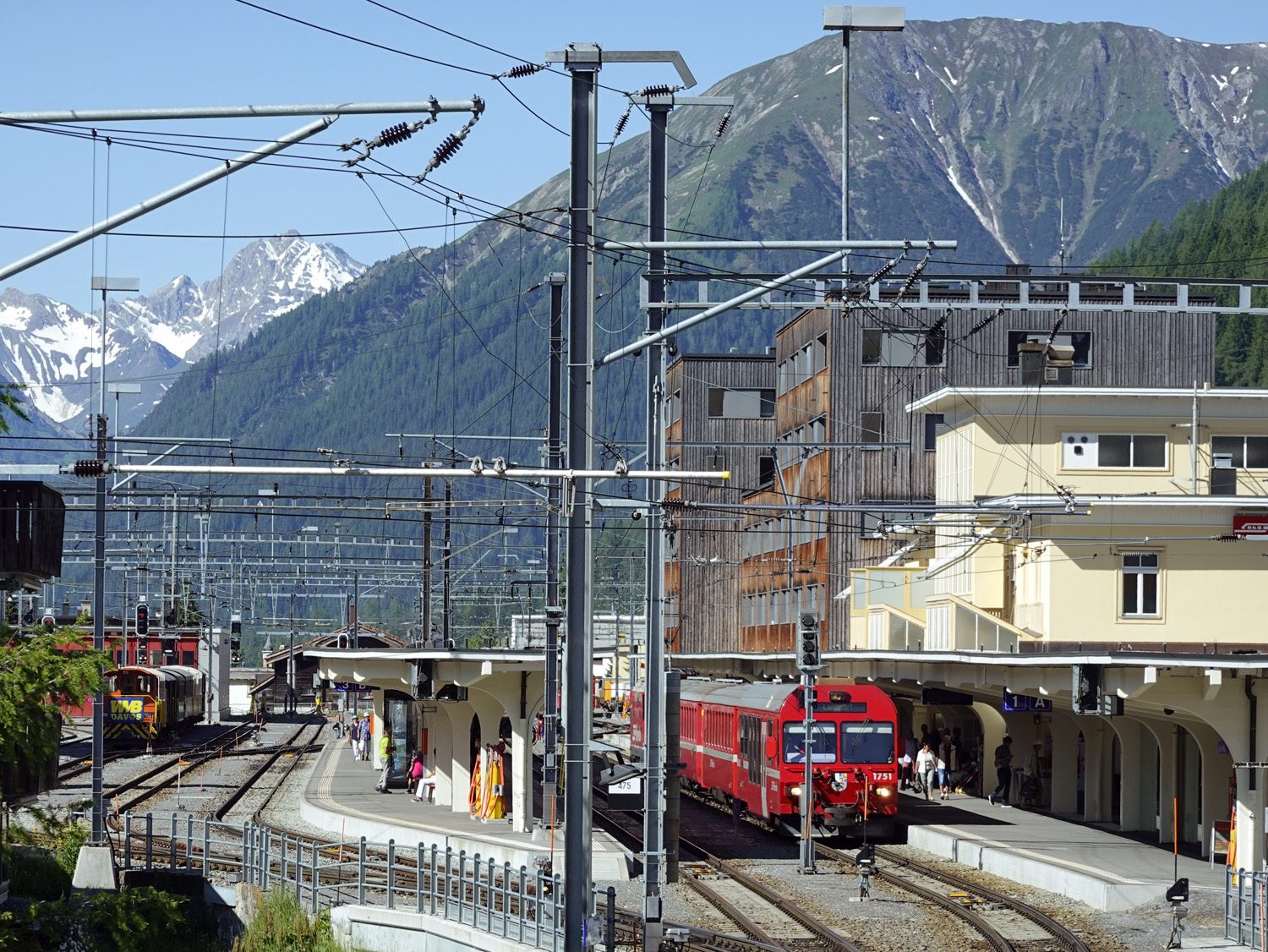 World politicians, business leaders, charities and pressure groups are meeting in Davos at the 2022 World Economic Forum. Normally this event takes place in January each year, but it was postponed to this May because of Covid-19 and is the first face-to-face meeting since January 2020.
World politicians, business leaders, charities and pressure groups are meeting in Davos at the 2022 World Economic Forum. Normally this event takes place in January each year, but it was postponed to this May because of Covid-19 and is the first face-to-face meeting since January 2020.
The meeting takes place amid a series of crises facing the world economy. The IMF’s Managing Director, Kristalina Georgieva, described the current situation as a ‘confluence of calamities’. Problems include:
- Continuing hangovers from Covid have caused economic difficulties in many countries.
- The bounceback from Covid has led to demand outpacing supply. The world is suffering from a range of supply-chain problems and shortages of key materials and components, such as computer chips.
- The war in Ukraine has not only caused suffering in Ukraine itself, but has led to huge energy and food price increases as a result of sanctions and the difficulties in exporting wheat, sunflower oil and other foodstuffs.
- Supply shocks have led to rising global inflation. This will feed into higher inflationary expectations, which will compound the problem if they result in higher prices and wages in response to higher costs.
- Central banks have responded by raising interest rates. These dampen an already weakened global economy and could push the world into recession.
- Global inequality is rising rapidly, both within countries and between countries, as Covid disruptions and higher food and energy prices hit the poor disproportionately. Poor people and countries also have a higher proportion of debt and are thus hit especially hard by higher interest rates.
- Global warming is having increasing effects, with a growing incidence of floods, droughts and hurricanes. These lead to crop failures and the displacement of people.
- Countries are increasingly resorting to trade restrictions as they seek to protect their own economies. These slow economic growth.
World leaders at Davos will be debating what can be done. One approach is to use fiscal policy. Indeed, Kristalina Georgieva said that her ‘main message is to recognise that the world must spend the billions necessary to contain Covid in order to gain trillions in output as a result’. But unless the increased expenditure is aimed specifically at tackling supply shortages and bottlenecks, it could simply add to rising inflation. Increasing aggregate demand in the context of supply shortages is not the solution.
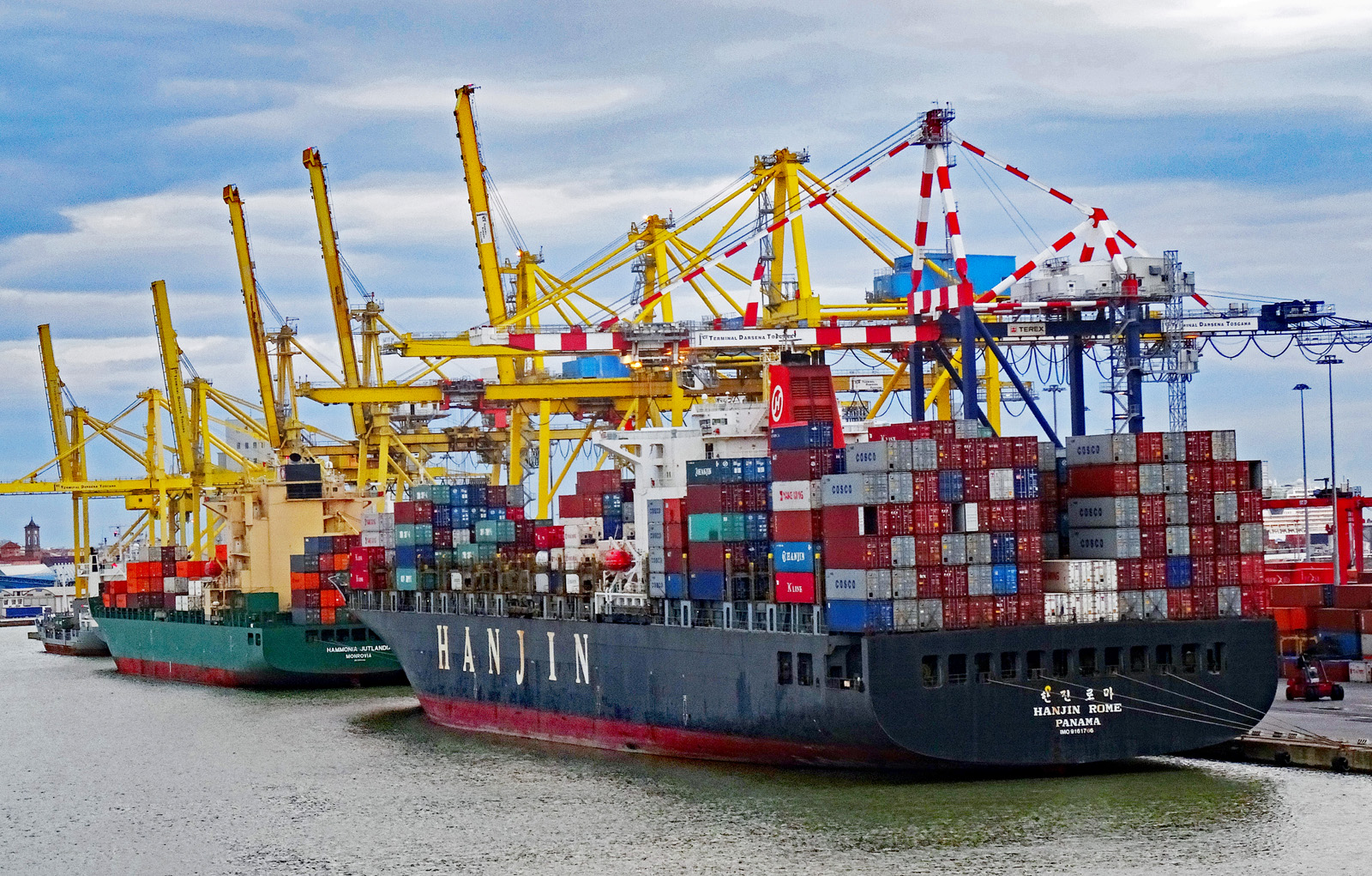 In the long run, supply bottlenecks can be overcome with appropriate investment. This may require both greater globalisation and greater localisation, with investment in supply chains that use both local and international sources.
In the long run, supply bottlenecks can be overcome with appropriate investment. This may require both greater globalisation and greater localisation, with investment in supply chains that use both local and international sources.
International sources can be widened with greater investment in manufacturing in some of the poorer developing countries. This would also help to tackle global inequality. Greater localisation for some inputs, especially heavier or more bulky ones, would help to reduce transport costs and the consumption of fuel.
With severe supply shocks, there are no simple solutions. With less supply, the world produces less and becomes poorer – at least temporarily until supply can increase again.
Articles
Discussion (video)
Report
Questions
- Draw an aggregate demand and supply diagram (AD/AS or DAD/DAS) to illustrate the effect of a supply shock on output and prices.
- Give some examples of supply-side policies that could help in the current situation.
- What are the arguments for and against countries using protectionist policies at the current time?
- What policies could countries adopt to alleviate rapid rises in the cost of living for people on low incomes? What problems do these policies pose?
- What are the arguments for and against imposing a windfall tax on energy companies and using the money to support poor people?
- If the world slips into recession, should central banks and governments use expansionary monetary and fiscal policies?
 The suffering inflicted on the Ukrainian people by the Russian invasion is immense. But, at a much lower level, the war will also inflict costs on people in countries around the world. There will be significant costs to households in the form of even higher energy and food price inflation and a possible economic slowdown. The reactions of governments and central banks could put a further squeeze on living standards. Stock markets could fall further and investment could decline as firms lose confidence.
The suffering inflicted on the Ukrainian people by the Russian invasion is immense. But, at a much lower level, the war will also inflict costs on people in countries around the world. There will be significant costs to households in the form of even higher energy and food price inflation and a possible economic slowdown. The reactions of governments and central banks could put a further squeeze on living standards. Stock markets could fall further and investment could decline as firms lose confidence.
Russia is the world’s second largest oil supplier and any disruption to supplies will drive up the price of oil significantly. Ahead of the invasion, oil prices were rising. At the beginning of February, Brent crude was around $90 per barrel. With the invasion, it rose above $100 per barrel.
 Russia is also a major producer of natural gas. The EU is particularly dependent on Russia, which supplies 40% of its natural gas. With Germany halting approval of the major new gas pipeline under the Baltic from Russia to Germany, Nord Stream 2, the price of gas has rocketed. On the day of the invasion, European gas prices rose by over 50%.
Russia is also a major producer of natural gas. The EU is particularly dependent on Russia, which supplies 40% of its natural gas. With Germany halting approval of the major new gas pipeline under the Baltic from Russia to Germany, Nord Stream 2, the price of gas has rocketed. On the day of the invasion, European gas prices rose by over 50%.
Nevertheless, with the USA deciding not to extend sanctions to Russia’s energy sector, the price of gas fell back by 32% the next day. It remains to be seen just how much the supplies of oil and gas from Russia will be disrupted over the coming weeks.
Both Russia and Ukraine are major suppliers of wheat and maize, between them responsible for 14% of global wheat production and 30% of global wheat exports. A significant rise in the price of wheat and other grains will exacerbate the current rise in food price inflation.
Russia is also a significant supplier of metals, such as copper, platinum, aluminium and nickel, which are used in a wide variety of products. A rise in their price has begun and will further add to inflationary pressures and supply-chain problems which have followed the pandemic.
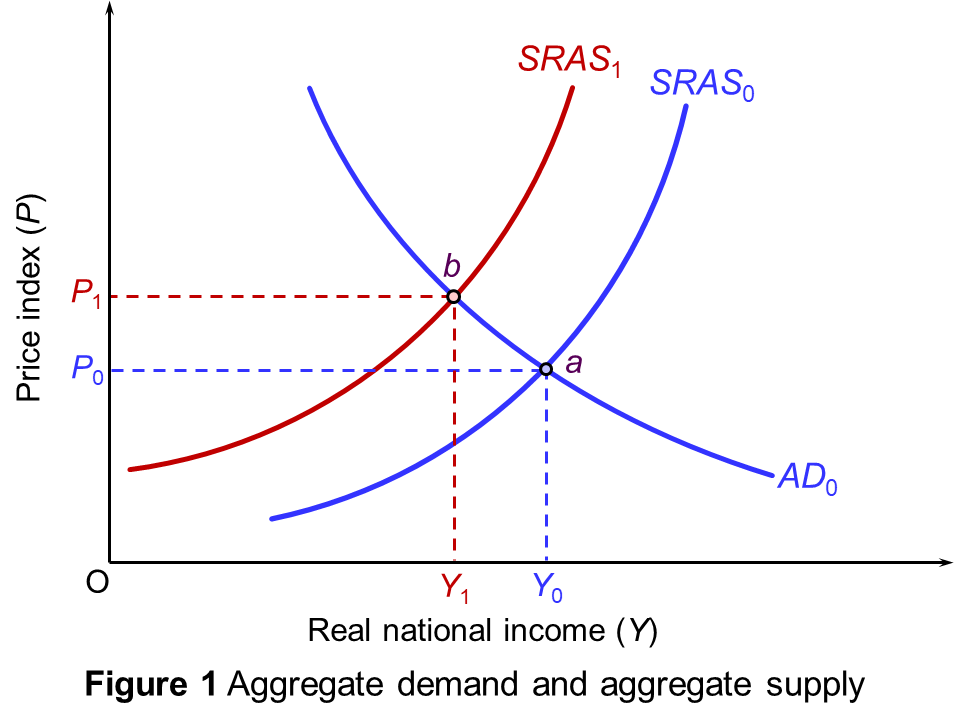 The effect of these supply shocks can be illustrated in a simple aggregate demand and supply diagram (see Figure 1), which shows a representative economy that imports energy, grain and other resources. Aggregate demand and short-run aggregate supply are initially given by AD0 and SRAS0. Equilibrium is at point a, with real national income (real GDP) of Y0 and a price index of P0.
The effect of these supply shocks can be illustrated in a simple aggregate demand and supply diagram (see Figure 1), which shows a representative economy that imports energy, grain and other resources. Aggregate demand and short-run aggregate supply are initially given by AD0 and SRAS0. Equilibrium is at point a, with real national income (real GDP) of Y0 and a price index of P0.
The supply shock shifts short-run aggregate supply to SRAS1. Equilibrium moves to point b. The price index rises to P1 and real national income falls to Y1. If it is a ‘one-off’ cost increase, then the price index will settle at the new higher level and GDP at the new lower level provided that real aggregate demand remains the same. Inflation will be temporary. If, however, the SRAS curve continues to shift upwards to the left, then cost-push inflation will continue.
These supply-side shocks make the resulting inflation hard for policymakers to deal with. When the problem lies on the demand side, where the inflation is accompanied by an unsustainable boom, a contractionary fiscal and monetary policy can stabilise the economy and reduce inflation. But the inflationary problem today is not demand-pull inflation; it’s cost-push inflation. Disruptions to supply are both driving up prices and causing an economic slowdown – a situation of ‘stagflation’, or even an inflationary recession.
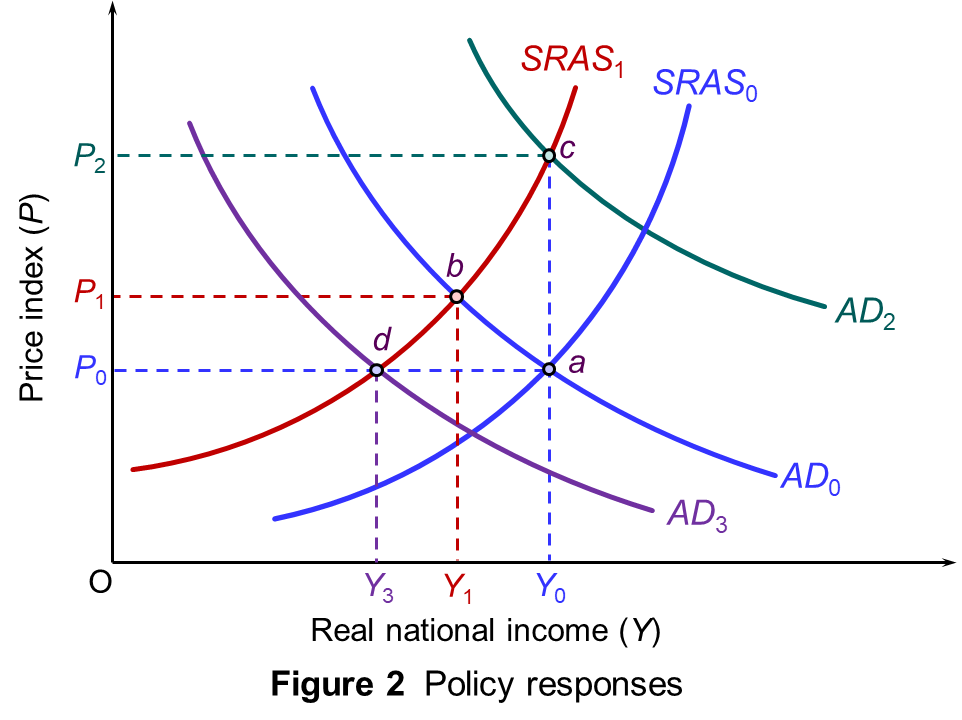 An expansionary policy, such as increasing bond purchases (quantitative easing) or increasing government spending, may help to avoid recession (at least temporarily), but will only exacerbate inflation. In Figure 2, aggregate demand shifts to AD2. Equilibrium moves to point c. Real GDP returns to Y0 (at least temporarily) but the price level rises further, to P2. (Click here for a PowerPoint of the diagram.)
An expansionary policy, such as increasing bond purchases (quantitative easing) or increasing government spending, may help to avoid recession (at least temporarily), but will only exacerbate inflation. In Figure 2, aggregate demand shifts to AD2. Equilibrium moves to point c. Real GDP returns to Y0 (at least temporarily) but the price level rises further, to P2. (Click here for a PowerPoint of the diagram.)
A contractionary policy, such as raising interest rates or taxes, may help to reduce inflation but will make the slowdown worse and could lead to recession. In the diagram, aggregate demand shifts to AD3. Equilibrium moves to point d. The price level returns to P0 (at least temporarily) but real income falls further, to Y3.
In other words, you cannot tackle both the slowdown/recession and the inflation simultaneously by the use of demand-side policy. One requires an expansionary fiscal and/or monetary policy; the other requires fiscal and/or monetary tightening.
Then there are other likely economic stresses. If NATO countries respond by increasing defence expenditure, this will put further strain on public finances.
Sentiment is a key driver of the economy and prices. Expectations tend to be self-fulfilling. So if the war in Ukraine undermines confidence in stock markets and the real economy and further raises inflationary expectations, this pessimistic mood will tend in itself to drive down share prices, drive up inflation and drive down investment and economic growth.
Articles
- How will Russia’s invasion of Ukraine hit the global economy?
Financial Times, Chris Giles, Jonathan Wheatley and Valentina Romei (25/2/22)
- Ukraine conflict raises the possibility of stagflation
Financial Times, The Editorial Board (25/2/22)
- Five ways the Ukraine war could push up prices
BBC News, Laura Jones (5/3/22)
- Jason Furman cautions against reading too much into the initial market reactions to Russia’s invasion
interest.co.nz, Jason Furman (26/2/22)
- Putin’s war promises to crush the global economy with inflation and much slower growth
Market Watch, Nouriel Roubini (25/2/22)
- Roubini: 6 Financial, Economic Risks of Russia-Ukraine War
ThinkAdvisor, Janet Levaux (25/2/22)
- Fed tightening plans now contending with war, possible oil shock
Reuters, Howard Schneider and Jonnelle Marte (24/2/22)
- The invasion of Ukraine changed everything for Wall Street
CNN, Julia Horowitz (27/2/22)
- Why the Russian invasion will have huge economic consequences for American families
CNN, Matt Egan (24/2/22)
- European gas prices soar and oil tops $105 after Russia attacks Ukraine
Financial Times, Neil Hume, Emiko Terazono and Tom Wilson (24/2/22)
- Five essential commodities that will be hit by war in Ukraine
The Conversation, Sarah Schiffling and Nikolaos Valantasis Kanellos (24/2/22)
- Ukraine: ‘I’m surprised the oil price hasn’t hit US$130 a barrel yet’ – energy trading expert Q&A
The Conversation, Adi Imsirovic (25/2/22)
- Ukraine crisis: Warning UK energy bills could top £3,000 a year
BBC News, Michael Race (25/2/22)
- Putin’s energy shock: The economic realities of invasion
BBC News, Faisal Islam (25/2/22)
- Fears of UK food and fuel prices rising due to war
BBC News, Oliver Smith & Michael Race (26/2/22)
- Ukraine conflict: What is Swift and why is banning Russia so significant?
BBC News, Russell Hotten (27/2/22)
- Ukraine conflict: How reliant is Europe on Russia for oil and gas?
BBC News, Jake Horton & Daniele Palumbo (25/2/22)
- Ukraine crisis complicates ECB’s path to higher rates
Reuters, Francesco Canepa and Balazs Koranyi (24/2/22)
- Russia and the West are moving towards all out economic war
Al Jazeera, Maximilian Hess (24/2/22)
Questions
- If there is a negative supply shock, what will determine the size of the resulting increase in the price level and the rate of inflation over the next one or two years?
- How may expectations affect (a) the size of the increase in the price level; (b) future prices of gas and oil?
- Why did stock markets rise on the day after the invasion of Ukraine?
- Argue the case for and against relaxing monetary policy and delaying tax rises in the light of the economic consequences of the war in Ukraine.
 Households are expected to see further rises in the cost of living after the annual inflation rate climbed for a 13th month to its highest point in almost 30 years. This will put further pressure on already stretched household budgets. The increase reflects a bounceback in demand for goods and services after lockdowns, when prices fell sharply. It also reflects the impact of supply-chain disruptions as Covid-19 hit factory production and global trade.
Households are expected to see further rises in the cost of living after the annual inflation rate climbed for a 13th month to its highest point in almost 30 years. This will put further pressure on already stretched household budgets. The increase reflects a bounceback in demand for goods and services after lockdowns, when prices fell sharply. It also reflects the impact of supply-chain disruptions as Covid-19 hit factory production and global trade.
The biggest concern, however, is the impact it will have on those already hard-pressed families across the UK. According to official figures, prices are rising at similar rates for richer and poorer households. However, household income levels will determine personal experiences of inflation. Poorer households find it harder to cope than richer families as essentials, such as energy and food, form a larger proportion of their shopping basket than discretionary items. On average the lowest-income families spend twice as much proportionately on food and housing bills as the richest. So low-income households, if they are already spending mainly on essentials, will struggle to find where to cut back as prices rise.
Latest Inflation figures
Latest figures from the ONS show that the Consumer Prices Index (CPI) rose by 5.5% in the year to January 2022, with further increases in the rate expected over the next couple of months. In measuring inflation, the ONS takes a so-called ‘basket of goods, which is frequently updated to reflect changes in spending patterns. For example, in 2021, hand sanitiser and men’s loungewear bottoms were added, but sandwiches bought at work were removed.
Annual CPI inflation is announced each month, showing how much the weighted average of these prices has risen since the same date last year. The weighted average is expressed as an index, with the index set at 100 in the base year, which is currently 2015.
 Consumers would not normally notice price rises from month to month. However, prices are now rising so quickly that it is clear for everyone to see. What is more, average pay is not keeping up. There are workers in a few sectors, such as lorry drivers, who are in high demand, and therefore their wages are rising faster than prices. But the majority of workers won’t see such increases in pay. In the 12 months to January, prices rose by 5.5% on average, but regular pay, excluding bonuses, on average rose by only 4.7%, meaning that they fell by 0.8% in real terms.
Consumers would not normally notice price rises from month to month. However, prices are now rising so quickly that it is clear for everyone to see. What is more, average pay is not keeping up. There are workers in a few sectors, such as lorry drivers, who are in high demand, and therefore their wages are rising faster than prices. But the majority of workers won’t see such increases in pay. In the 12 months to January, prices rose by 5.5% on average, but regular pay, excluding bonuses, on average rose by only 4.7%, meaning that they fell by 0.8% in real terms.
The Bank of England has warned that CPI inflation could rise to 7% this year and some economists are forecasting that it could be almost 8% in April.
Why are costs rising?
From the weekly food shop, to filling up cars, to heating our homes, the cost of living is rising sharply around the world. Global inflation is at its highest since 2008. Some of the reasons why include:
- Rising energy and petrol prices
 Oil prices slumped at the start of the pandemic, but demand has rocketed back since, and oil prices have hit a seven-year high. The price of gas has also shot up, leaving people around the world with eye-watering central heating bills. Home energy bills in the UK are set to rise by 54% in April when Ofgem, the energy regulator, raises the price cap.
Oil prices slumped at the start of the pandemic, but demand has rocketed back since, and oil prices have hit a seven-year high. The price of gas has also shot up, leaving people around the world with eye-watering central heating bills. Home energy bills in the UK are set to rise by 54% in April when Ofgem, the energy regulator, raises the price cap.
- Goods shortages
During the pandemic, prices of everyday consumer goods increased. Consumers spent more on household goods and home improvements because they were stuck at home, couldn’t go out to eat or go on holiday. Manufacturers in places such as Asia have struggled to keep up with the demand. This has led to shortages of materials such as plastic, concrete and steel, driving up prices. Timber cost as much as 80% more than usual in 2021 in the UK.
- Shipping costs
Global shipping companies have been overwhelmed by surging demand after the pandemic and have responded by raising shipping charges. Retailers are now having to pay a lot more to get goods into stores. These prices are now being passed on to consumers. Air freight fees have also increased, having been made worse by a lorry driver shortage in Europe.
- Rising wages
During the pandemic many people changed jobs, or even quit the workforce – a problem exacerbated in the UK by Brexit as many European workers returned to their home countries. Firms are now having problems recruiting staff such as drivers, food processors and restaurant waiters. This has resulted in companies putting up wages to attract and retain staff. Those extra costs to employers are again being passed on to consumers.
- Extreme weather impact
Extreme weather in many parts of the world has contributed to inflation. Global oil supplies took a hit from hurricanes which damaged US oil infrastructure. Fierce storms in Texas also worsened the problems in meeting the demand for microchips. The cost of coffee has also jumped after Brazil had a poor harvest following its most severe drought in almost a century.
- Trade barriers
 More costly imports are also contributing to higher prices. New post-Brexit trading rules are estimated to have reduced imports from the EU to the UK by about a quarter in the first half of 2021. In the USA, import tariffs on Chinese goods have almost entirely been passed on to US customers in the form of higher prices. Chinese telecoms giant Huawei said last year that sanctions imposed on the company by the USA in 2019 were affecting US suppliers and global customers.
More costly imports are also contributing to higher prices. New post-Brexit trading rules are estimated to have reduced imports from the EU to the UK by about a quarter in the first half of 2021. In the USA, import tariffs on Chinese goods have almost entirely been passed on to US customers in the form of higher prices. Chinese telecoms giant Huawei said last year that sanctions imposed on the company by the USA in 2019 were affecting US suppliers and global customers.
- The end of pandemic support
Governments are ending the support given to businesses during the pandemic. Public spending and borrowing increased across the world leading to tax rises. This has contributed to rises in the cost-of-living, while most people’s wages have lagged behind.
Main concerns for the UK inflation
With rapidly rising prices, the economic decisions people will have to make are much harder. The main concerns for UK households include increases in energy costs, food prices, rent and interest rates on borrowing. All of these concerns come at a time when the government prepares to increase national insurance contributions for workers in April. There has been some pressure from MPs to scrap the tax rise so as to ease the pressure on living costs. It can be argued that there are fairer ways to increase taxes than through national insurance. However, the plan is relatively progressive, and scrapping the rise could be a badly targeted way of helping the poorest households with their energy bills.
Energy Bills
Electricity and gas bills for a typical household are expected to increase on average by £693 a year in April, which, as we have seen, is a 54% increase. Around 18 million households on standard tariffs will see an average increase from £1277 to £1971 per year. And around 4.5 million prepayment customers will see an average increase of £708 – from £1309 to £2017. Energy bills won’t rise immediately for customers on fixed rates, but many are likely to see a significant increase when their deal ends.
Bills are going up because the energy price cap is being raised. The energy price cap is an example of a maximum price being imposed on the market; it is the maximum price suppliers in England, Wales and Scotland can charge households for their energy. Energy firms can increase bills by 54% when the new cap is introduced in April. The price cap is currently reviewed every 6 months and it is expected that that prices will rise again in October.
Energy price rises are likely to hit Britain’s poorest households the hardest as they spend proportionately more of their income on energy, a problem exacerbated by many living in poorly insulated homes. More people are thus expected to find themselves facing fuel poverty. This means that they spend a disproportionate amount of their income on energy and cannot afford to heat their homes adequately. According to the Resolution Foundation, the poorest will see their energy spend rise from 8.5% to 12% of their total household budget, three times the percentage for the richest.
The way fuel poverty is measured varies around the UK. In Scotland, a household is in fuel poverty if more than 10% of its income is spent on fuel and its remaining income isn’t enough to maintain an adequate standard of living. It is expected that the number of homes facing ‘fuel stress’ across the UK will treble to 6.3 million after April. It will, however, have the greatest impact on pensioners, people in local authority housing and low-income single-adult households who on average could be forced to spend over 50% of their income on gas and electricity. The Resolution Foundation thinktank has warned that UK households are facing a ‘cost of living catastrophe’.
Food
 Low-income households also spend a larger proportion than average on food and will therefore be relatively more affected by increases in food prices. Food and non-alcoholic drink prices were up by 4.2% in the year to December 2021. The Monetary Policy Committee has stated that food price inflation is expected to increase in coming months, given higher input costs. It has been estimated by the thinktank, Food Foundation, that 4.7m Britons, equivalent to 8.8% of the population, are struggling to feed themselves and are regularly going a day without eating.
Low-income households also spend a larger proportion than average on food and will therefore be relatively more affected by increases in food prices. Food and non-alcoholic drink prices were up by 4.2% in the year to December 2021. The Monetary Policy Committee has stated that food price inflation is expected to increase in coming months, given higher input costs. It has been estimated by the thinktank, Food Foundation, that 4.7m Britons, equivalent to 8.8% of the population, are struggling to feed themselves and are regularly going a day without eating.
Supermarkets have also raised their concerns about future increases. Tesco’s chairman John Allan has predicted that the worst is yet to come, pointing to 5% as a likely figure for food price inflation by the spring. He cited high energy prices, both for Tesco and its suppliers, as a key factor behind the expected rise.
It has been observed that the Smart Price, Basics and Value range products offered by supermarkets as lower-cost alternatives are stealthily being extinguished from the shelves. This is leaving shoppers with no choice but to ‘level up’ to the supermarkets’ own better-quality branded goods – usually in smaller quantities at larger prices. The managing director of Iceland, Richard Walker, has stated that his stores are not losing customers to other competitors or to better offers, but to food banks and to hunger. This is a highly concerning statement given that 2.5m citizens were forced by an array of desperate circumstances to use food banks over the past year.
Rent
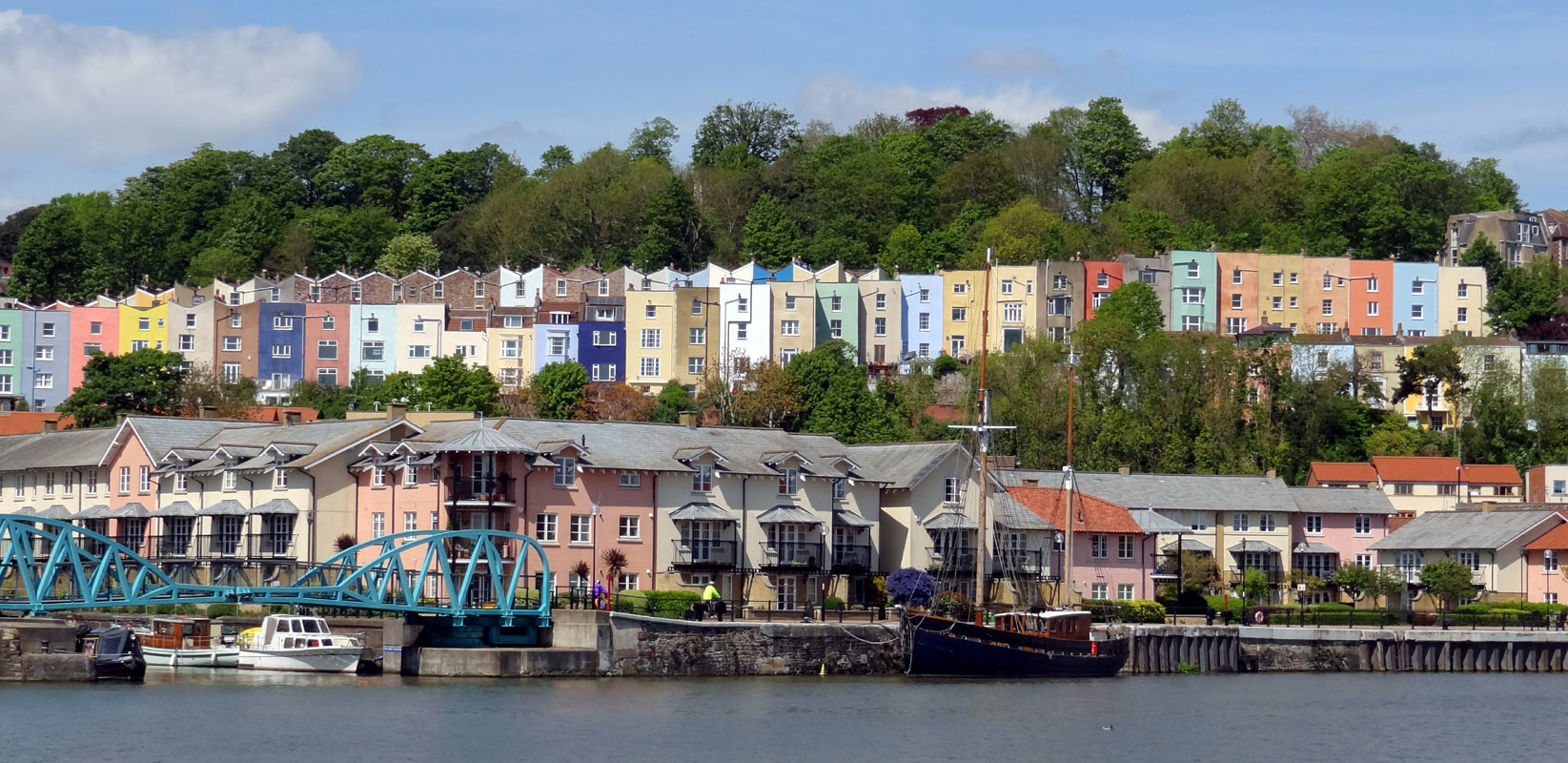 Private rents are also rising at their fastest rate in five years, intensifying the increase in the cost of living for millions of households. Data from the ONS reveal that the average cost of renting in the UK rose by 2% in 2021. This was the largest annual increase since 2017. The East Midlands had the biggest increase in average rental prices, with tenants paying 3.6% more than a year earlier. However, due to falling demand for city flats during lockdown, as people favoured working from home, London had the smallest increase at 0.1%. Nevertheless, as Covid restrictions are removed, renters, including office workers and students, are now returning back to cities. This is now pushing up rental prices with demand outpacing supply.
Private rents are also rising at their fastest rate in five years, intensifying the increase in the cost of living for millions of households. Data from the ONS reveal that the average cost of renting in the UK rose by 2% in 2021. This was the largest annual increase since 2017. The East Midlands had the biggest increase in average rental prices, with tenants paying 3.6% more than a year earlier. However, due to falling demand for city flats during lockdown, as people favoured working from home, London had the smallest increase at 0.1%. Nevertheless, as Covid restrictions are removed, renters, including office workers and students, are now returning back to cities. This is now pushing up rental prices with demand outpacing supply.
The property website Zoopla found newly advertised rental prices were rising much faster across the UK. It said the average rent jumped 8.3% in the final three months of 2021 to £969 a month. This increase in rental prices, combined with the general rise in prices will place additional pressure on the government to increase support for vulnerable families. The housing charity, Shelter, has reported an increase in people who are struggling to pay their rent and even pay their electricity. With Covid-era protections having ended, if people struggle to pay, they are faced with eviction or even homelessness. There are calls for the government to support such people by reversing welfare cuts.
Insurer, Legal & General, has announced an additional investment over the next 5 years of £2.5bn on its ‘build to rent’ schemes. The aim is to provide more than 7000 purpose-built rental homes in UK towns and cities. L&G claims that the additional homes are part of the solution to the rental problem, with rent increases being capped at 5% for five years. However, sceptics claim the company is simply trying to cash in on the booming market and there are calls for further government action. The Joseph Rowntree Foundation claim that renters will struggle as rents in some areas have risen as much as 8%. Despite this, housing benefit has been frozen for two years and therefore there are calls for government to urgently relink housing benefit to the real cost of renting.
Articles
- UK inflation forecast to hit 8% in April amid cost of living crisis
The Guardian, Phillip Inman (16/2/22)
- Inflation: Seven reasons the cost of living is going up around the world
BBC News, Beth Timmins and Daniel Thomas (20/1/22)
- Why are gas bills so high and what’s the energy price cap?
BBC News (4/2/22)
- What is the UK’s inflation rate and why is the cost of living going up?
BBC News (16/2/22)
- In numbers: what is fuelling Britain’s cost of living crisis?
The Guardian, Richard Partington and Ashley Kirk (3/2/22)
- Rising cost of living in the UK
House of Commons Library, Research Briefing, Brigid Francis-Devine, Daniel Harari, Matthew Keep and Paul Bolton (8/2/22)
- Rising cost of living leaves 4.7mn Britons struggling to feed themselves
Financial Times, Bethan Staton (6/2/22)
- UK cost of living crisis merits a full response
Financial Times, The editorial board (3/2/22)
- UK cost of living crisis intensifies
Financial Times, Darren Dodd (19/1/22)
- The cost of living crisis – who is hit by recent price increases?
IFS, Peter Levell and Heidi Karjalainen (17/11/21)
- The cost of living crunch
IFS, Robert Joyce, Heidi Karjalainen, Peter Levell and Tom Waters (12/1/22)
- Fastest rent rise in five years adds to concerns over UK cost of living crisis
The Guardian, Georgina Quach (16/2/22)
Questions
- What other measures of inflation are used beside CPI inflation? How do they differ?
- If all consumers are facing approximately the same price increases for any given good or service, why are poor people being disproportionately hit by rising prices?
- For what reasons might the rate of inflation (a) rise further; (b) begin to fall?
- Examine a developed country other than the UK and find out how inflation is affecting its population. Is its experience similar to that in the UK? Does it differ in any way?
 Inflation across the world has been rising. This has been caused by a rise in aggregate demand as the global economy has ‘bounced back’ from the pandemic, while supply-chain disruptions and tight labour markets constrain the ability of aggregate supply to respond to the rise in demand.
Inflation across the world has been rising. This has been caused by a rise in aggregate demand as the global economy has ‘bounced back’ from the pandemic, while supply-chain disruptions and tight labour markets constrain the ability of aggregate supply to respond to the rise in demand.
But what of the coming months? Will supply become more able to respond to demand as supply-chain issues ease, allowing further economic growth and an easing of inflationary pressures?
Or will higher inflation and higher taxes dampen real demand and cause growth, or even output, to fall? Are we about to enter an era of ‘stagflation’, where economies experience rising inflation and economic stagnation? And will stagnation be made worse by central banks which raise interest rates to dampen the inflation but, in the process, dampen spending.
Despite the worries of central banks, with inflation being higher than forecast a few months ago, forecasts (e.g. the OECD’s) are still for inflation to peak fairly soon and then to fall back to around 2 to 3 per cent by the beginning of 2023 – close to central bank target rates.
 In the UK, annual CPI inflation reached 5.4% in December 2021. The UK Treasury’s January 2022 new monthly forecasts for the UK economy by 15 independent institutions give an average forecast of 4.0% for CPI inflation for 2022. In the USA, annual consumer price inflation reached 7 per cent in December 2021, but is forecast to fall to just over the target rate of 2% by the end of 2022.
In the UK, annual CPI inflation reached 5.4% in December 2021. The UK Treasury’s January 2022 new monthly forecasts for the UK economy by 15 independent institutions give an average forecast of 4.0% for CPI inflation for 2022. In the USA, annual consumer price inflation reached 7 per cent in December 2021, but is forecast to fall to just over the target rate of 2% by the end of 2022.
If central banks respond to the current high inflation by raising interest rates more than very slightly and by stopping quantitative easing (QE), or even engaging in quantitative tightening (selling assets purchased under previous QE schemes), there is a severe risk of a sharp slowdown in economic activity. Household budgets are already being squeezed by the higher prices, especially energy and food prices. And people will face higher taxes as governments seek to reduce their debts, which soared with the Covid support packages during the pandemic.
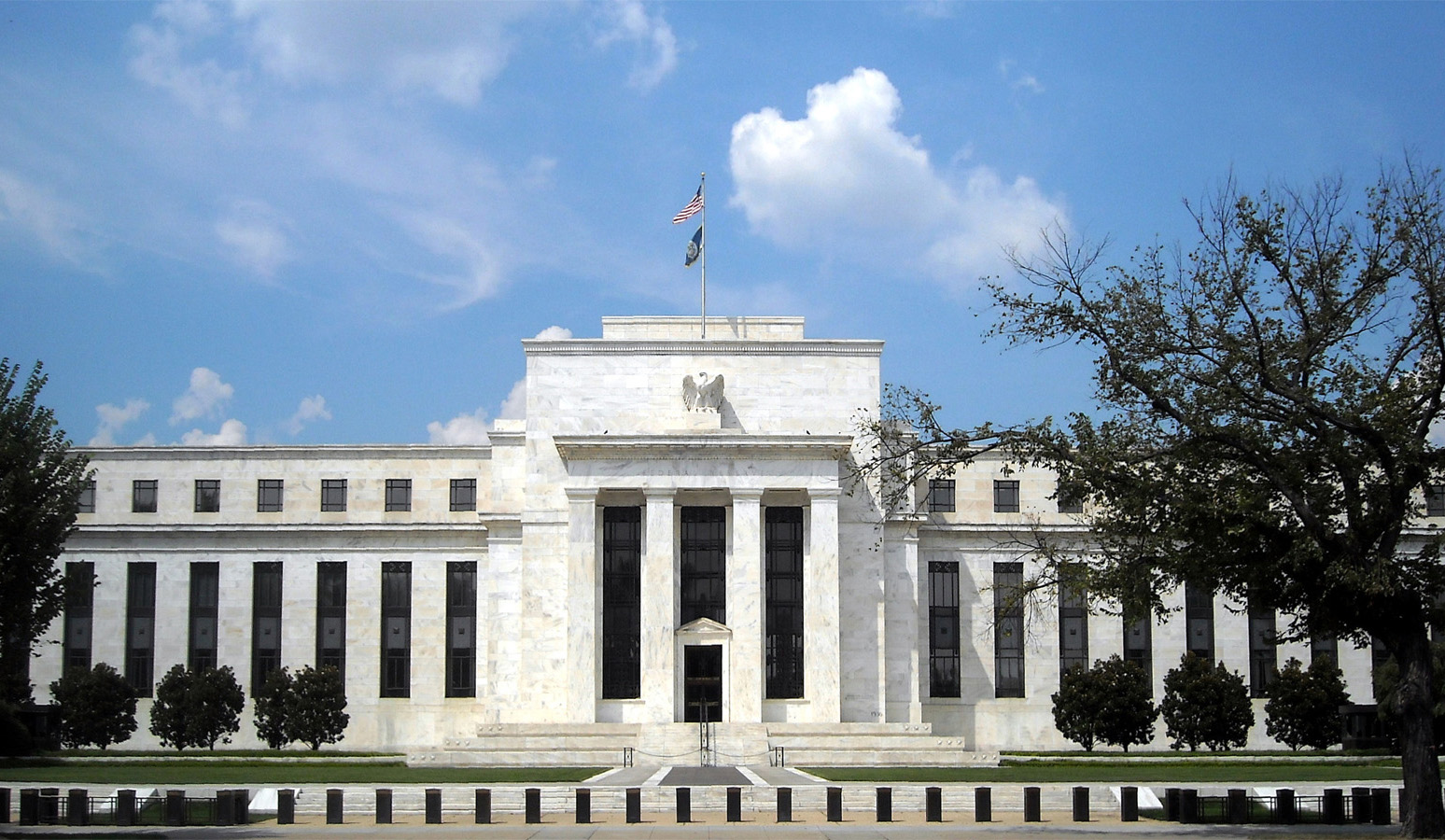 The Fed has signalled that it will end its bond buying (QE) programme in March 2022 and may well raise interest rates at the same time. Quantitative tightening may then follow. But although GDP growth is still strong in the USA, Fed policy and stretched household budgets could well see spending slow and growth fall. Stagflation is less likely in the USA than in the UK and many other countries, but there is still the danger of over-reaction by the Fed given the predicted fall in inflation.
The Fed has signalled that it will end its bond buying (QE) programme in March 2022 and may well raise interest rates at the same time. Quantitative tightening may then follow. But although GDP growth is still strong in the USA, Fed policy and stretched household budgets could well see spending slow and growth fall. Stagflation is less likely in the USA than in the UK and many other countries, but there is still the danger of over-reaction by the Fed given the predicted fall in inflation.
But there are reasons to be confident that stagflation can be avoided. Supply-chain bottlenecks are likely to ease and are already showing signs of doing so, with manufacturing production recovering and hold-ups at docks easing. The danger may increasingly become one of demand being excessively dampened rather than supply being constrained. Under these circumstances, inflation could rapidly fall, as is being forecast.
Nevertheless, as Covid restrictions ease, the hospitality and leisure sector is likely to see a resurgence in demand, despite stagnant or falling real disposable incomes, and here there are supply constraints in the form of staffing shortages. This could well lead to higher wages and prices in the sector, but probably not enough to prevent the fall in inflation.
Articles
- Inflation will probably melt away in 2022 – central banks will do far more harm trying to tackle it
The Conversation, Brigitte Granville (14/1/22)
- Stagflation and why it matters
The Week, Chas Newkey-Burden (1/10/21)
- Surging inflation could dwarf other issues in the political landscape as households feel the strain
Sky News, Ed Conway (19/1/22)
- Inflation is back, and there’s plenty more in the pipeline
The Guardian, Larry Elliott (19/1/22)
- UK inflation jumps to highest level in 30 years
Financial Times, Chris Giles (19/1/22)
- UK workers’ pay rises fall behind inflation amid cost-of-living crisis
The Guardian, Richard Partington (18/1/22)
- UK faces a pay squeeze – and higher interest rates look likely
The Guardian, Phillip Inman (18/1/22)
- Inflation: why it’s temporary and raising interest rates will do more harm than good
The Conversation, Muhammad Ali Nasir (22/11/21)
- Inflation: why it is the biggest test yet for central bank independence
The Conversation, Anton Muscatelli (14/12/21)
- Three more interest rate rises loom after Bank’s borrowing cost shock
The Telegraph, Russell Lynch and Tim Wallace (16/12/21)
- US Stagflation: The Global Risk Of 2022 – OpEd
Eurasia Review, Dan Steinbock (17/1/22)
- If prices keep rising, a nightmare scenario for the US economy is a real possibility
CNN, Paul R La Monica (12/1/22)
- Will inflation in the UK keep rising?
Bank of England (10/12/21)
Data
Questions
- Under what circumstances would stagflation be (a) more likely; (b) less likely?
- Find out the causes of stagflation in the early/mid-1970s.
- Argue the case for and against the Fed raising interest rates and ending its asset buying programme.
- Why are labour shortages likely to be higher in the UK than in many other countries?
- Research what is likely to happen to fuel prices over the next two years. How is this likely to impact on inflation and economic growth?
- Is the rise in prices likely to increase or decrease real wage inequality? Explain.
- Distinguish between cost-push and demand-pull inflation. Which of the two is more likely to result in stagflation?
- Why are inflationary expectations a major determinant of actual inflation? What influences inflationary expectations?
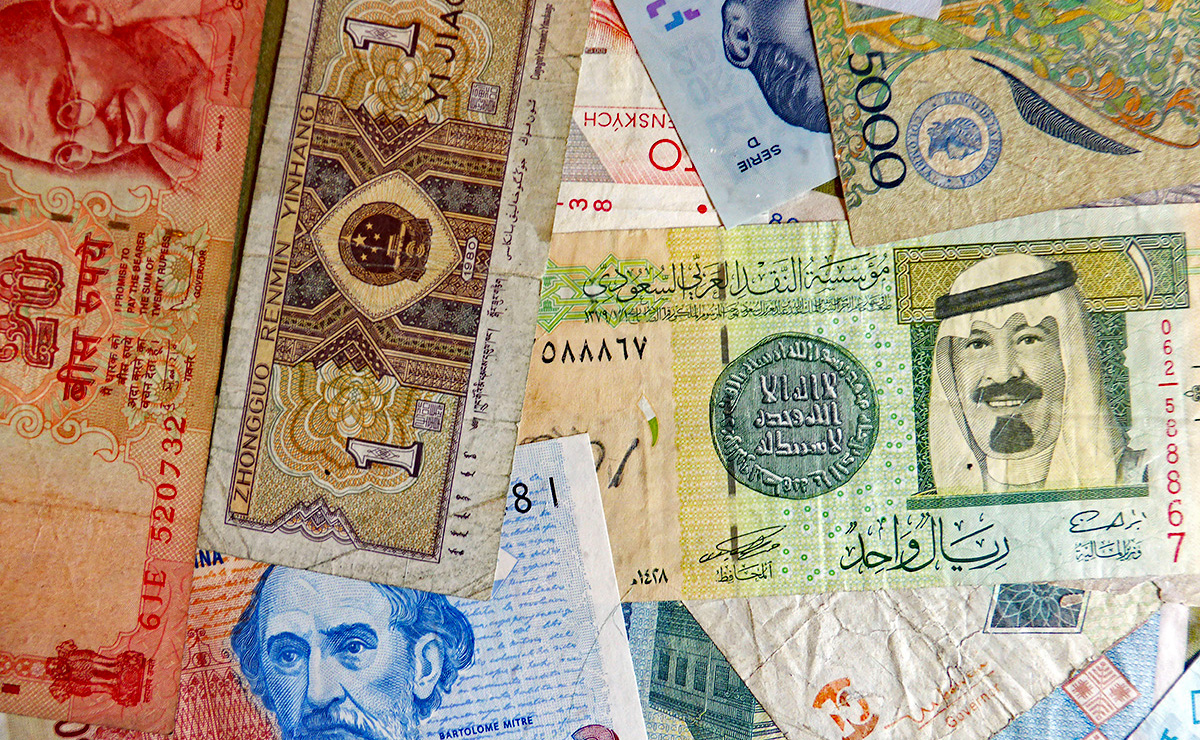 Inflation has been rising around the world as a combination of a recovery in demand and supply-chain issues have resulted in aggregate demand exceeding aggregate supply. Annual consumer price inflation at the beginning of 2022 is around 2.5% in China, 3.5% in Sweden, 5% in the eurozone, Canada and India, 6% in the UK and South Africa, 7% in the USA and 7.5% in Mexico. In each case it is forecast to go a little higher before falling back again.
Inflation has been rising around the world as a combination of a recovery in demand and supply-chain issues have resulted in aggregate demand exceeding aggregate supply. Annual consumer price inflation at the beginning of 2022 is around 2.5% in China, 3.5% in Sweden, 5% in the eurozone, Canada and India, 6% in the UK and South Africa, 7% in the USA and 7.5% in Mexico. In each case it is forecast to go a little higher before falling back again.
Inflation in Turkey
In Turkey inflation is much higher. The official annual rate of consumer price inflation in December 2021 was 36.1%, sharply up from 21.3% in November. But according to Turkey’s influential ENAGrup the December rate was much higher still at 82.8%. Official producer price inflation was 79.9% and this will feed through into official consumer price inflation in the coming weeks.
The rise in inflation has hit the poor particularly badly. According to the official statistics, in the year to December 2021, domestic energy prices increased by 34.2%, food by 44.7% and transport by 53.7%. In response, the government has raised the minimum wage by nearly 50% for 2022.
Causes of high and rising inflation
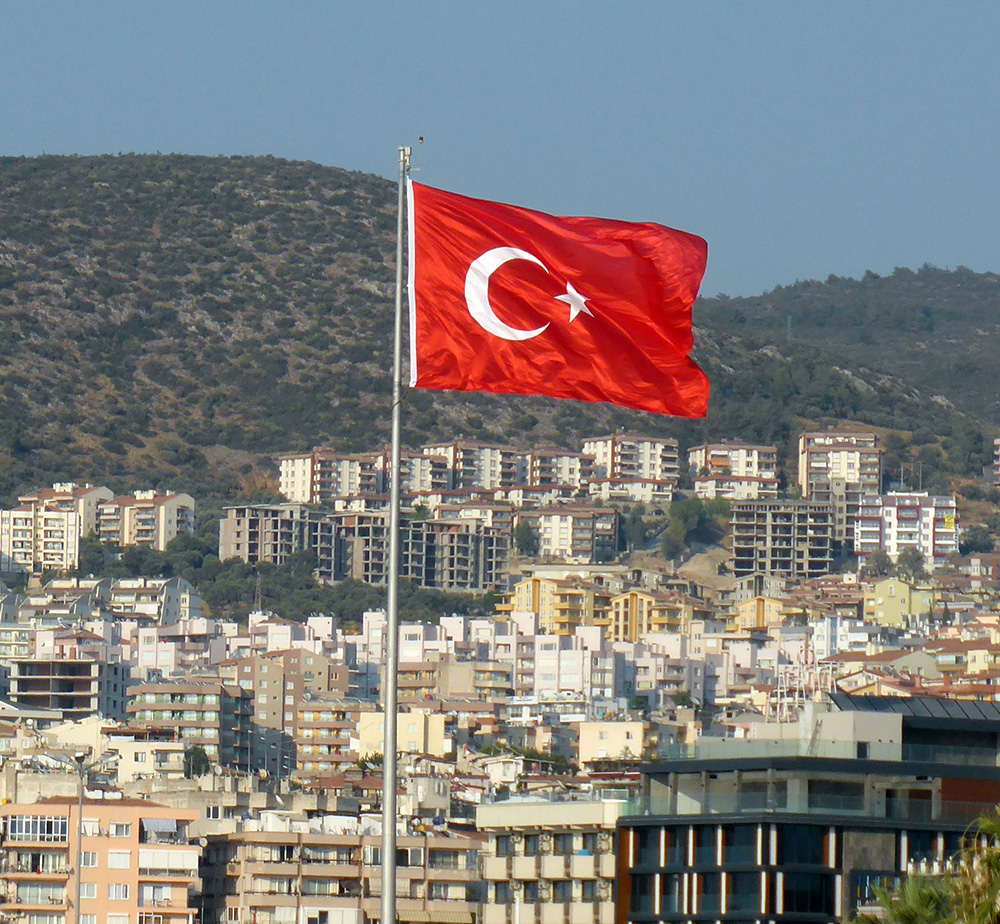 Why is Turkey’s inflation so much higher than in most developed and emerging economies and why has it risen so rapidly? The answer is that aggregate demand has been excessively boosted – well ahead of the ability of supply to respond. This has driven inflation expectations.
Why is Turkey’s inflation so much higher than in most developed and emerging economies and why has it risen so rapidly? The answer is that aggregate demand has been excessively boosted – well ahead of the ability of supply to respond. This has driven inflation expectations.
Turkey’s leader, President Erdoğan, in recent years has been seeking to stimulate economic growth through a mixture of supply-side, fiscal and monetary policies. He has hoped that the prospect of high growth would encourage both domestic and inward investment and that this would indeed drive the high growth he seeks. To encourage investment he has sought to reduce the reliance on imports through various measures, such as public procurement favouring domestic firms, tax reliefs for business and keeping interest rates down. He has claimed that the policy is focused on investment, production, employment and exports, instead of the ‘vicious circle of high interest rates and low exchange rates’.
With the pandemic, fiscal policy was largely focused on health, social security and employment measures. Such support was aided by a relatively healthy public finances. General government debt was 32% of GDP in 2020. This compares with 74% for the EU and 102% for the G7. Nevertheless, the worsening budget deficit has made future large-scale expenditure on public infrastructure, tax cuts for private business and other supply-side measures more difficult. Support for growth has thus fallen increasingly to monetary policy.
The Turkish central bank is not independent, with the President firing senior officials with whom he disagrees over monetary policy. The same applies to the Finance Ministry, with independently-minded ministers losing their jobs. Monetary and exchange rate policy have thus become the policy of the President. And it is here that a major part of the current problem of rising inflation lies.
Monetary and exchange rate policy
Despite rising inflation, the central bank has reduced interest rates. At its monthly meeting in September 2021, the Turkish central bank reduced its key rate from 19% to 18% and then to 16% in October, to 15% in November and 14% in December. These unprecedented rate cuts saw a large increase in the money supply. M1 rose by 11.7% in November alone; the annual growth rate was 59.5%. Broad money (M2 and M3) similarly rose. M3 grew by an annual rate of 51% in November 2021. The cut in interest rates and rise in money supply led to a rise in nominal expenditure which, in turn, led to higher prices.

The cut in interest rates and rise in nominal aggregate demand led to a large depreciation in the exchange rate. On 1 September 2021, 100 Turkish lira exchanged for $12.05. By 11 January 2022 the rate had fallen to $7.22 – a 40.1% depreciation. This depreciation, in turn, further stoked inflation as the lower exchange rate pushed up the price of imported goods. (Click here for a PowerPoint of the chart.)
Attempts were made to stem this fall in the lira on 20 December, by which point 100 lira were trading for just $5.50 (see chart) and speculation against the lira was gathering momentum. President Erdoğan announced a scheme to protect lira deposits against currency volatility, guaranteeing lira deposits in hard currency terms. The mechanism adopted was a rise in the interest rate on lira deposits with a maturity of 3 to 12 months, thereby encouraging people to lock in deposits for the medium term and not, therefore, to use them to speculate against the lira by buying other currencies. Other interest rates would be unaffected. At the same time the central bank used foreign currency reserves to engage in large-scale purchases of the lira on the foreign exchange market.
The lira rallied. By 23 December, 100 lira were trading for $8.79. But then selling of the lira began again and, as stated above, by early January 100 lira had fallen to $7.22. The underlying problem of excess demand and high inflationary expectations had not been solved.
It remains to be seen whether the President will change his mind and decide that the central bank needs to raise interest rates to reduce inflation and restore confidence.
Videos
Articles
- Turkish Inflation Hits Highest Since 2002 Amid Lira Woes
Bloomberg, Baris Balci and Cagan Koc (3/1/22)
- Turkey’s annual inflation rate is over 82 percent, finds research group
Bianet (3/1/22)
- How Turkey can overcome its economic challenges
Arab News, Zaid M Belbagi (2/1/22)
- Turkey cuts interest rates despite spiralling inflation
BBC News, Victoria Craig (16/12/21)
- Turkey inflation surges 36% amid lira crisis, highest since 2002
CNBC (3/1/22)
- Turkey mulls new financial instruments to shield against inflation
Daily Sabah (3/1/22)
- Turkey raises minimum wage as lira crash, inflation sow hardship
Aljazeera, Umar Farooq (16/12/21)
- What to make of Turkey’s latest unorthodox currency move
Financial Times, Mohamed El-Erian (21/12/21)
- Erdoğan gambles on economy amid protests and rocketing inflation
The Guardian, Phillip Inman (24/11/21)
- Explained: How did Turkey’s economy go so wrong?
The Indian Express, Patricia Cohen (15/12/21)
Data
Questions
- Until the pandemic, the Turkish economy could be seen as a success story. Why?
- What supply-side policies did Turkey pursue?
- Use either an aggregate demand and supply diagram or a dynamic aggregate demand and supply (DAD/DAS) diagram to explain what has happened to inflation in Turkey in the past few months.
- Explain the thinking behind the successive cuts in interest rates since September 2021.
- Why did the measures introduced on 20 December 2021 only temporarily halt the depreciation of the lira?
- Choose a country with a higher rate of inflation than Turkey (see second data link above). Find out the causes of its high rate. Are they similar to those in Turkey?
 World politicians, business leaders, charities and pressure groups are meeting in Davos at the 2022 World Economic Forum. Normally this event takes place in January each year, but it was postponed to this May because of Covid-19 and is the first face-to-face meeting since January 2020.
World politicians, business leaders, charities and pressure groups are meeting in Davos at the 2022 World Economic Forum. Normally this event takes place in January each year, but it was postponed to this May because of Covid-19 and is the first face-to-face meeting since January 2020.  In the long run, supply bottlenecks can be overcome with appropriate investment. This may require both greater globalisation and greater localisation, with investment in supply chains that use both local and international sources.
In the long run, supply bottlenecks can be overcome with appropriate investment. This may require both greater globalisation and greater localisation, with investment in supply chains that use both local and international sources.  Watch IMF chief Kristalina Georgieva and Citigroup CEO Jane Fraser discuss the global economy
Watch IMF chief Kristalina Georgieva and Citigroup CEO Jane Fraser discuss the global economy The suffering inflicted on the Ukrainian people by the Russian invasion is immense. But, at a much lower level, the war will also inflict costs on people in countries around the world. There will be significant costs to households in the form of even higher energy and food price inflation and a possible economic slowdown. The reactions of governments and central banks could put a further squeeze on living standards. Stock markets could fall further and investment could decline as firms lose confidence.
The suffering inflicted on the Ukrainian people by the Russian invasion is immense. But, at a much lower level, the war will also inflict costs on people in countries around the world. There will be significant costs to households in the form of even higher energy and food price inflation and a possible economic slowdown. The reactions of governments and central banks could put a further squeeze on living standards. Stock markets could fall further and investment could decline as firms lose confidence. Russia is also a major producer of natural gas. The EU is particularly dependent on Russia, which supplies 40% of its natural gas. With Germany halting approval of the major new gas pipeline under the Baltic from Russia to Germany, Nord Stream 2, the price of gas has rocketed. On the day of the invasion, European gas prices rose by over 50%.
Russia is also a major producer of natural gas. The EU is particularly dependent on Russia, which supplies 40% of its natural gas. With Germany halting approval of the major new gas pipeline under the Baltic from Russia to Germany, Nord Stream 2, the price of gas has rocketed. On the day of the invasion, European gas prices rose by over 50%.  The effect of these supply shocks can be illustrated in a simple aggregate demand and supply diagram (see Figure 1), which shows a representative economy that imports energy, grain and other resources. Aggregate demand and short-run aggregate supply are initially given by AD0 and SRAS0. Equilibrium is at point a, with real national income (real GDP) of Y0 and a price index of P0.
The effect of these supply shocks can be illustrated in a simple aggregate demand and supply diagram (see Figure 1), which shows a representative economy that imports energy, grain and other resources. Aggregate demand and short-run aggregate supply are initially given by AD0 and SRAS0. Equilibrium is at point a, with real national income (real GDP) of Y0 and a price index of P0. An expansionary policy, such as increasing bond purchases (quantitative easing) or increasing government spending, may help to avoid recession (at least temporarily), but will only exacerbate inflation. In Figure 2, aggregate demand shifts to AD2. Equilibrium moves to point c. Real GDP returns to Y0 (at least temporarily) but the price level rises further, to P2. (Click
An expansionary policy, such as increasing bond purchases (quantitative easing) or increasing government spending, may help to avoid recession (at least temporarily), but will only exacerbate inflation. In Figure 2, aggregate demand shifts to AD2. Equilibrium moves to point c. Real GDP returns to Y0 (at least temporarily) but the price level rises further, to P2. (Click  Households are expected to see further rises in the cost of living after the annual inflation rate climbed for a 13th month to its highest point in almost 30 years. This will put further pressure on already stretched household budgets. The increase reflects a bounceback in demand for goods and services after lockdowns, when prices fell sharply. It also reflects the impact of supply-chain disruptions as Covid-19 hit factory production and global trade.
Households are expected to see further rises in the cost of living after the annual inflation rate climbed for a 13th month to its highest point in almost 30 years. This will put further pressure on already stretched household budgets. The increase reflects a bounceback in demand for goods and services after lockdowns, when prices fell sharply. It also reflects the impact of supply-chain disruptions as Covid-19 hit factory production and global trade.  Consumers would not normally notice price rises from month to month. However, prices are now rising so quickly that it is clear for everyone to see. What is more, average pay is not keeping up. There are workers in a few sectors, such as lorry drivers, who are in high demand, and therefore their wages are rising faster than prices. But the majority of workers won’t see such increases in pay. In the 12 months to January, prices rose by 5.5% on average, but regular pay, excluding bonuses, on average rose by only 4.7%, meaning that they fell by 0.8% in real terms.
Consumers would not normally notice price rises from month to month. However, prices are now rising so quickly that it is clear for everyone to see. What is more, average pay is not keeping up. There are workers in a few sectors, such as lorry drivers, who are in high demand, and therefore their wages are rising faster than prices. But the majority of workers won’t see such increases in pay. In the 12 months to January, prices rose by 5.5% on average, but regular pay, excluding bonuses, on average rose by only 4.7%, meaning that they fell by 0.8% in real terms. Oil prices slumped at the start of the pandemic, but demand has rocketed back since, and oil prices have hit a seven-year high. The price of gas has also shot up, leaving people around the world with eye-watering central heating bills. Home energy bills in the UK are set to rise by 54% in April when Ofgem, the energy regulator, raises the price cap.
Oil prices slumped at the start of the pandemic, but demand has rocketed back since, and oil prices have hit a seven-year high. The price of gas has also shot up, leaving people around the world with eye-watering central heating bills. Home energy bills in the UK are set to rise by 54% in April when Ofgem, the energy regulator, raises the price cap. Low-income households also spend a larger proportion than average on food and will therefore be relatively more affected by increases in food prices. Food and non-alcoholic drink prices were up by 4.2% in the year to December 2021. The Monetary Policy Committee has stated that food price inflation is expected to increase in coming months, given higher input costs. It has been estimated by the thinktank, Food Foundation, that 4.7m Britons, equivalent to 8.8% of the population, are struggling to feed themselves and are regularly going a day without eating.
Low-income households also spend a larger proportion than average on food and will therefore be relatively more affected by increases in food prices. Food and non-alcoholic drink prices were up by 4.2% in the year to December 2021. The Monetary Policy Committee has stated that food price inflation is expected to increase in coming months, given higher input costs. It has been estimated by the thinktank, Food Foundation, that 4.7m Britons, equivalent to 8.8% of the population, are struggling to feed themselves and are regularly going a day without eating.  Private rents are also rising at their fastest rate in five years, intensifying the increase in the cost of living for millions of households. Data from the ONS reveal that the average cost of renting in the UK rose by 2% in 2021. This was the largest annual increase since 2017. The East Midlands had the biggest increase in average rental prices, with tenants paying 3.6% more than a year earlier. However, due to falling demand for city flats during lockdown, as people favoured working from home, London had the smallest increase at 0.1%. Nevertheless, as Covid restrictions are removed, renters, including office workers and students, are now returning back to cities. This is now pushing up rental prices with demand outpacing supply.
Private rents are also rising at their fastest rate in five years, intensifying the increase in the cost of living for millions of households. Data from the ONS reveal that the average cost of renting in the UK rose by 2% in 2021. This was the largest annual increase since 2017. The East Midlands had the biggest increase in average rental prices, with tenants paying 3.6% more than a year earlier. However, due to falling demand for city flats during lockdown, as people favoured working from home, London had the smallest increase at 0.1%. Nevertheless, as Covid restrictions are removed, renters, including office workers and students, are now returning back to cities. This is now pushing up rental prices with demand outpacing supply.  Inflation across the world has been rising. This has been caused by a rise in aggregate demand as the global economy has ‘bounced back’ from the pandemic, while supply-chain disruptions and tight labour markets constrain the ability of aggregate supply to respond to the rise in demand.
Inflation across the world has been rising. This has been caused by a rise in aggregate demand as the global economy has ‘bounced back’ from the pandemic, while supply-chain disruptions and tight labour markets constrain the ability of aggregate supply to respond to the rise in demand.  In the UK, annual CPI inflation
In the UK, annual CPI inflation  The Fed has signalled that it will end its bond buying (QE) programme in March 2022 and may well raise interest rates at the same time. Quantitative tightening may then follow. But although GDP growth is still strong in the USA, Fed policy and stretched household budgets could well see spending slow and growth fall. Stagflation is less likely in the USA than in the UK and many other countries, but there is still the danger of over-reaction by the Fed given the predicted fall in inflation.
The Fed has signalled that it will end its bond buying (QE) programme in March 2022 and may well raise interest rates at the same time. Quantitative tightening may then follow. But although GDP growth is still strong in the USA, Fed policy and stretched household budgets could well see spending slow and growth fall. Stagflation is less likely in the USA than in the UK and many other countries, but there is still the danger of over-reaction by the Fed given the predicted fall in inflation. Inflation has been rising around the world as a combination of a recovery in demand and supply-chain issues have resulted in aggregate demand exceeding aggregate supply. Annual consumer price inflation at the beginning of 2022 is around 2.5% in China, 3.5% in Sweden, 5% in the eurozone, Canada and India, 6% in the UK and South Africa, 7% in the USA and 7.5% in Mexico. In each case it is forecast to go a little higher before falling back again.
Inflation has been rising around the world as a combination of a recovery in demand and supply-chain issues have resulted in aggregate demand exceeding aggregate supply. Annual consumer price inflation at the beginning of 2022 is around 2.5% in China, 3.5% in Sweden, 5% in the eurozone, Canada and India, 6% in the UK and South Africa, 7% in the USA and 7.5% in Mexico. In each case it is forecast to go a little higher before falling back again. Why is Turkey’s inflation so much higher than in most developed and emerging economies and why has it risen so rapidly? The answer is that aggregate demand has been excessively boosted – well ahead of the ability of supply to respond. This has driven inflation expectations.
Why is Turkey’s inflation so much higher than in most developed and emerging economies and why has it risen so rapidly? The answer is that aggregate demand has been excessively boosted – well ahead of the ability of supply to respond. This has driven inflation expectations.